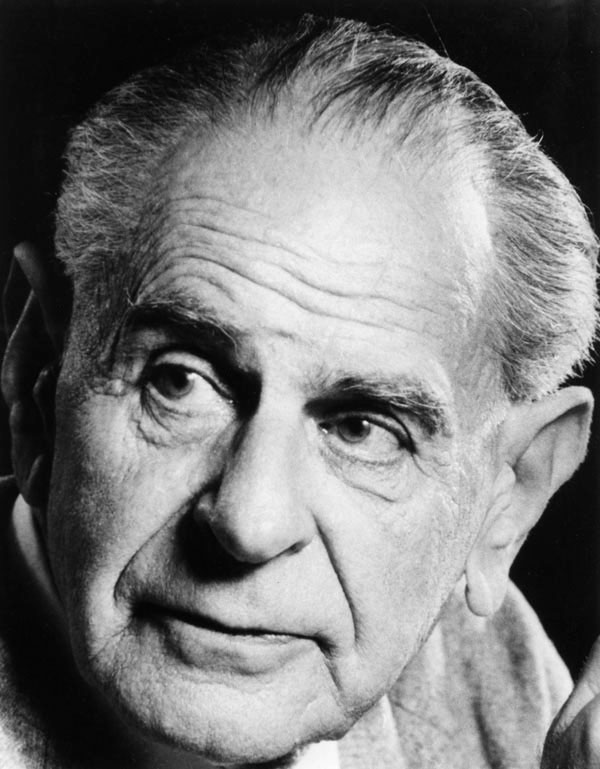Introduction
Understanding the nature of reality has been a central quest for philosophers throughout history. Among them, Karl Popper, an influential 20th-century philosopher of science, introduced a fascinating concept known as “Three Worlds.” This concept provides a straightforward yet profound framework to grasp the diverse aspects of reality and their interconnections. In this blog article, we will explore Popper’s Three Worlds and shed light on their significance in understanding the world we live in.
World 1: The Physical World
The first world, also known as the “Physical World,” comprises all the tangible and observable entities that exist around us. It includes everything from the Earth we stand on, the mountains we admire, the oceans we traverse, to the vast cosmic wonders of the universe. This world encompasses objects, events, and processes that we can perceive through our senses or detect through scientific instruments.
Example 1: Mount Everest – A physical entity that represents the magnificence and grandeur of the natural world.
Example 2: Solar Eclipse – A celestial event where the moon passes between the Earth and the Sun, resulting in a breathtaking cosmic phenomenon.
World 2: The World of Mental Experiences
Moving from the realm of external reality, we enter the second world – the “World of Mental Experiences.” This world revolves around the realm of our inner thoughts, feelings, and perceptions. It encompasses the entirety of our subjective experiences, from the joy we feel during happy moments to the fear we experience when facing a challenge.
Example 1: Love – An emotion experienced in the World of Mental Experiences, bringing people closer and fostering deep connections.
Example 2: Fear of Heights – A subjective feeling in response to a specific situation, originating from the individual’s mental experiences.
The World of Mental Experiences is an essential aspect of human existence, shaping how we perceive and interpret the information gathered from the Physical World. It plays a crucial role in understanding the interactions between individuals and their surroundings, highlighting the importance of human consciousness in comprehending reality.
World 3: The World of Abstract Entities
Beyond the physical and mental realms, we venture into the realm of ideas, knowledge, and theories – the “World of Abstract Entities.” This world consists of abstract concepts created by the human mind, such as mathematical theorems, scientific laws, literary works, and artistic expressions. These creations represent the culmination of human intellect, creativity, and innovation.
Example 1: Pythagorean Theorem – An abstract mathematical concept that demonstrates the relationship between the sides of a right-angled triangle.
Example 2: Theory of Relativity – An abstract scientific theory proposed by Albert Einstein, revolutionizing our understanding of space, time, and gravity.
The World of Abstract Entities transcends individual minds and becomes a shared cultural and intellectual heritage. It includes disciplines like science, philosophy, art, and literature, forming the cornerstone of human civilization’s progress.
Interplay between the Three Worlds
Understanding the interconnectedness between these three worlds is key to comprehending reality more comprehensively. The Physical World serves as the foundation upon which our experiences and mental processes are built. Our subjective experiences, in turn, influence the creation and development of abstract entities in the World 3. For example, scientific theories are products of human observation and experimentation (World 1) and mental reasoning (World 2), ultimately leading to the formulation of abstract scientific laws and principles (World 3).
Example: The Theory of Evolution – Charles Darwin’s observations of various species in the natural world (World 1) led to his development of the theory of evolution (World 3), which explains the diversity of life on Earth.
Furthermore, the World of Abstract Entities has a reciprocal impact on the other two worlds. The knowledge derived from abstract theories guides our perception and interaction with the Physical World. Moreover, shared abstract knowledge creates a common cultural understanding that influences individual mental experiences.
Conclusion
Karl Popper’s Three Worlds present a compelling framework to understand the intricate layers of reality. By recognizing the interplay between the Physical World, the World of Mental Experiences, and the World of Abstract Entities, we gain a deeper appreciation of the complexity of human existence and the intellectual achievements that shape our civilization. Embracing these three worlds encourages us to explore new ideas, challenge existing beliefs, and continuously evolve our understanding of the world around us.
